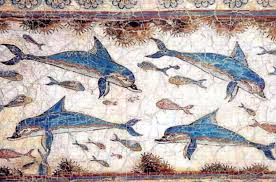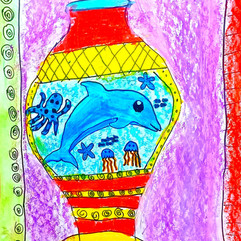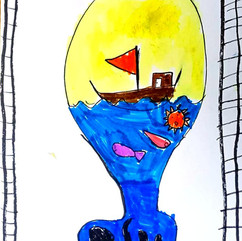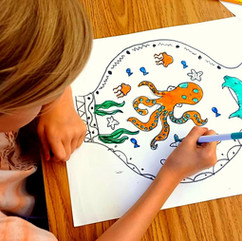Minoans
- Serene
- Sep 16, 2023
- 2 min read
The Minoans
3100-1100 BC Crete

This week we looked at the art and design of the ancient lost civilization of the Minoans that existed for over five thousand years. It was an advanced Bronze Age culture that thrived on the island of Crete and is considered the first civilization in Europe. Women held a high status and figured prominently in art. The evidence of Mother Goddess images suggests it may have been one of the last Matriarchal if not equitable societies. Renowned for its remarkable architecture and artwork, it was rediscovered in the early 20th century by British archaeologist Sir Arthur Evans, who named it after the mythical King Minos, believed by Classical Greeks to have once ruled Knossos. Minoan artwork is characterized by vivid images and extraordinary craftsmanship. Surviving examples include pottery, intricately carved seals, palace frescos, small sculptures, fabrics, jewelry, and metalwork.
Engaging in extensive trade across the Aegean and Eastern Mediterranean, the Minoans exported agricultural products and luxury crafts, often bartering for raw metal, which was scarce on Crete. Their cultural influence reached far beyond their homeland through traders and artisans, leaving a lasting impact on art and design. Evidence of Minoan artists and their murals were found in Egypt. It is believed that they pioneered Fresco techniques that later featured prominently in Greek, Roman, Egyptian, and European art.
Elaborately designed cities and Minoan buildings featured indoor plumbing in addition to street drainage systems and water facilities available through clay pipes. Glimpses of their society displayed in their art showed minimal signs of warfare preferring culture and commerce. Their economy was rooted in exports, farming, and fishing and they are credited with cultivating numerous crops including grapes, wine, and olives, and domesticating bees.
We only know of this fascinating culture from the art and artifacts that survived. Two writing systems were developed by the Minoans but both scripts remain undeciphered to this day, and the true nature of their language and much of their culture still remains a mystery.
This week we welcomed several new students to the class. We created Minoan-style vases
that incorporated a variety of imagery including marine animals, ships, and pattern designs.



















































Comments